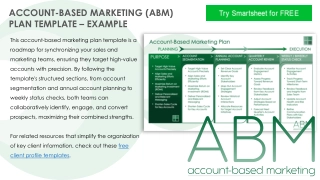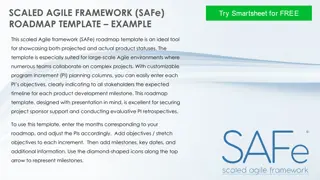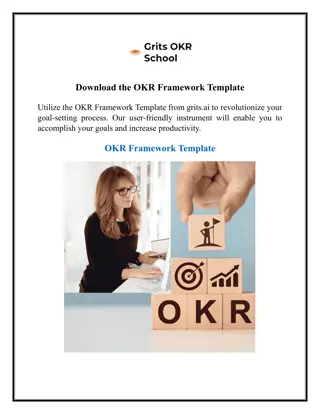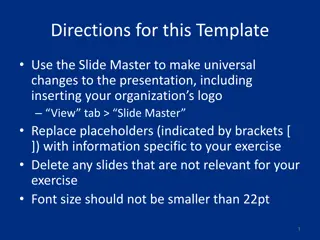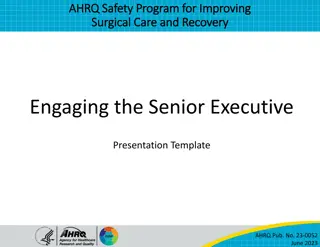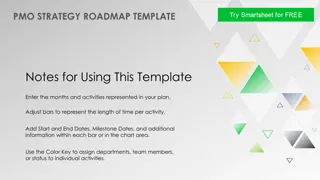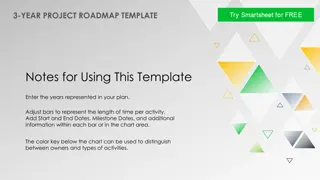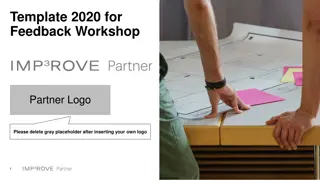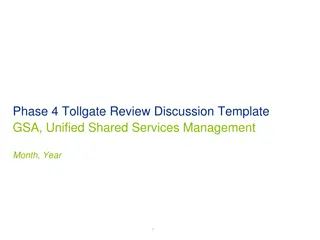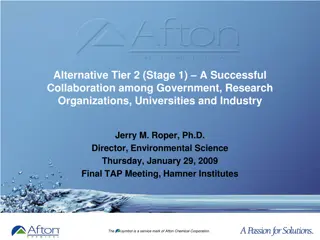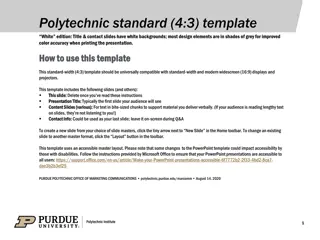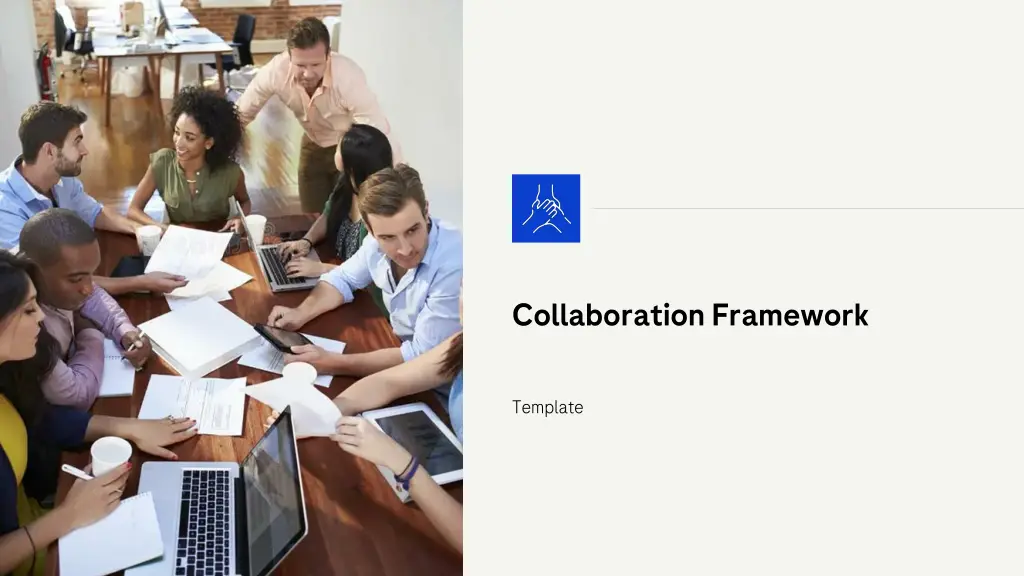
Synergy and Strategic Value of Collaboration in Addressing Global Challenges
Explore the strategic value and synergy created through collaboration to address global challenges like cancer care. Learn how partnerships align objectives, allocate resources, and foster innovation for shared goals.
Download Presentation

Please find below an Image/Link to download the presentation.
The content on the website is provided AS IS for your information and personal use only. It may not be sold, licensed, or shared on other websites without obtaining consent from the author. If you encounter any issues during the download, it is possible that the publisher has removed the file from their server.
You are allowed to download the files provided on this website for personal or commercial use, subject to the condition that they are used lawfully. All files are the property of their respective owners.
The content on the website is provided AS IS for your information and personal use only. It may not be sold, licensed, or shared on other websites without obtaining consent from the author.
E N D
Presentation Transcript
Collaboration Framework Template 1
Shared vision, goals and objectives Operating model for the collaboration: Clarify roles and responsibilities at the global and city level Elements of a collaboration framework M&E and reporting framework Communications plan External communications and engagement Internal communications Onboarding, partner collaboration and technical support Governance structure and dedicated resources 2
What is the challenge we try to tackle together? Defining the challenges organizations are tackling together is crucial to ensure aligned objectives, foster collaboration, and effectively allocate resources towards shared goals; this session aims to provide the foundation and rationale for developing a partnership. Challenges - (Examples) Key figures and fact. Examples: There are 18.1 million new cancer cases (2) and more than 9.6 million cancer deaths worldwide each year (3) (70% occur in LMICs (4)) and these numbers are increasing drastically. This negatively affects economic and social development, particularly in LMICs. Low disease awareness Poor living conditions Economic pressures Despite recent improvements in cancer care worldwide, access to innovative care remains an enormous challenge in LMICs Lack of regulatory pathways and limited availability of medicines Limited HC infrastructure & supply chain Lack of patient support NCDs like cancer require sufficient funding, clinical guidelines, adequate diagnosis, radiotherapy, human resources specialized in cancer, hospital infrastructure for patients to get the care they need. 3
The strategic value of our collaboration lies in the synergy we created This slide presents key areas of synergy, and highlights how each organisation can complement each other and the assets the value/resources they bring to the partnership Example: Org 1 and Org 2 recognize that an innovative, locally-owned, collaborative process will lead to the best long-term results for patients and the health system. This requires the engagement of the healthcare system, governments, NGOs, private sector, civil society and others. x and x have complementary skills that together increases impact. Example: Org 2 brings technical expertise to drive improvements in cancer care, access to educational resources and training programs and a collaborative network of diverse stakeholders, including other partner organizations, local governments, HC professionals, and international agencies focused on developing and implementing cancer care solutions Example: Org 1 supports the collaboration by providing funding, technical expertise, assistance, and strategic guidance and shares its expertise and local health system knowledge, which allows x to have more impact. 4
Vision and goals collaboration framework Vision: Goal: Objective # 1: Objective # 2: Objective # 3: T T Areas of collaboration: 5
Areas of collaboration Identify areas of collaboration and/or programs and projects. Examples: 01. Service delivery: Support the development of Quality Assurance programmes, treatment guidelines and protocols to ensure the standardisation of quality cancer care Examples: Adapted treatment guidelines and protocols, quality assurance programmes 02. Health Workforce: Build the capacity of healthcare professionals across the spectrum of cancer diagnosis, treatment and care. Examples: Palliative care training, capacity building, oncology nursing curriculum, trainings 03. Health Information Systems: Generate local evidence, together with city stakeholders, and contribute to strengthening cancer surveillance and information systems Examples: Institutional cancer registries, standardised reporting, interoperability 04. Health Financing: Support the development of investment strategies, providing tools to support local decision makers in allocating resources and leveraging opportunities for external funding Examples: National health financing landscaping, new funding solutions 05. Leadership and Governance: Connect, motivate and build the capacity of key stakeholders and decision makers on the ground and fostering an enabling policy environment for strengthening cancer care systems Examples: Multisectoral cancer advisory group in Government, training for oncology managers 6
Partnership Principles This session aims to provide the principles. You can access C/Can Constructive Engagement Frameworkfor reference and benchmarking Positive impact Responsibilities and accountabilities Activities should be designed and implemented with a clear delineation of responsibilities and accountabilities. Compatibility and alignment No endorsement Independence and reputation Provision of support Collaborative relationship Commit to a relationship built on trust, mutual respect and transparency. Constructive engagement Non-exclusivity 7
Out of scope Establishes what is out of scope - examples based on existing policies To primarily achieve marketing or promotional objectives To unlawfully promote XX products/services (e.g. promotion to patients in non Direct to Consumer countries and/or other relevant stakeholders) The following activities or goals are out of scope. The collaboration is not established: To inappropriately influence regulatory, pricing, formulary or reimbursement decisions To influence the content of Clinical Practice Guidelines To provide any form of bribery or improper advantages. To build relationships. The primary purpose of the provision of support (funding) or partnership should not be provided to build relationships. 8
Operating model for the collaboration - examples Deliverable Description Team accountable The core team will develop a document with the mid term strategy for the partnership serving as a strategic direction and roadmap to support the development of the annual plans and will review it every year (Nov/Dec) The core team will develop an annual plan every year, with focus on the prioritized Global/local joint programs Mid term collaboration strategy Global teams Annual plan with prioritized (*) programs Presentation/Overview including progress made in prioritized objectives & programs per year 2 check-ins during the year with Global team to share updates and socialize progress of objectives. Review annual plan and make changes if needed. (May/Sep) End of year report will be created summarizing the impact/progress made (prioritized programs) and per city (city progres) according to the M&E plan and will highlight changes or adapt 3 year objectives End of year report City/Country Deliverable Description Team accountable Local /Regional teams Active cities (Empower and Grow) Once per year each local manager / implementation partner provides an overview of the projects, using the city project snapshots (summary of all the running projects for possible future collaboration). On a quarterly basis provides the roadmap of activities, events, and communication efforts for the year and engages x team. Ensure flexibility for country adaptation. Project execution Transition to Sustainability Sustainability 9 (*) Prioritization criteria: Global/cross city programs with highest Impact, sustainability, scalability
Monitoring, Evaluation and Reporting - examples Deliverable Description Team accountable Prioritized programs (global and city) M&E common framework The framework will use existing KPIs as much as possible. Framework will be updated annually. Baselines will be established. Quarterly progress report Reporting on the progress made on the KPIs will be done quarterly and discussed by the core team Annual report Annual report will be created summarizing the impact/progress made together, based on the M&E framework Deliverable Description Team accountable Local programs Quarterly progress report and meeting Provide a brief quarterly report for each city, and hold a meeting between the local manager and affiliate to review progress. Annual report (consolidated with global report) Annual report will be created summarizing the impact/progress made together and will be made, according to the M&E plan 10
Operating model: Workflow - example Nov Dec Jan Feb Mar Apr May Jun Jul Aug Sep Oct Nov Dec Check in + Quarterly progress report Annual plan with prioritized (*) programs Check in (High level updates) Check in (High level updates) End of year report Global Op. model One quarterly meeting per city Check in + Quarterly progress report Check in + Quarterly progress report Check in + Quarterly progress report Annual plan with prioritized programs Cities Int & Ext. Coms & Ext engagement Quarterly meeting Quarterly meeting Tactical plan (*) Prioritization criteria: Global/cross city programs with highest Impact, sustainability, scalability 11
Monitoring & Evaluation framework The M&E framework will include: Logic Models Key performance indicators (KPIs) Reporting frequency timelines Learning and dissemination/publication Reporting tools and templates Roles and responsibilities 12
The logic model includes: Development goal / Vision Outcomes Activities Outputs Medium/Long Short Clear and compelling description of something that you seek to create, rooted in a deeply felt purpose The concrete long term changes you seek in service of achieving the vision The concrete short term changes you seek in service of achieving the vision What you need to do to produce the outputs Deliverables that you produce to realize the outcomes Logic models are graphic depictions of the relationship between a program s tasks and its intended outcomes 13
External communications & engagement - example Deliverable Description Team accountable Global communication & engagement plan External communications & engagement plan An annual external engagement plan will be developed jointly (by March), including meetings, conferences, and publications Meetings will be held between the communications teams to discuss opportunities and communications strategy Quarterly meetings Deliverable Description Team accountable City-level communication & engagement plan City/national level communication & advocacy plan A communications and engagement plan will be developed jointly (March), including meetings, conferences and publications.. Level of engagement may vary by city, and will be based on the City Engagement Plan. Ensure success stories are highlighted. Quarterly meetings Communications and engagement will be discussed during the quarterly operational meetings, unless there is a reason for additional meetings. 14
Internal communications - example Deliverable Description Team accountable x internal communication & engagement plan Brief annual internal communications plan x comms will develop an annual plan for sharing information within the organization Quarterly meetings Internal information sharing meetings will be held to broaden dissemination within the organization Deliverable Description Team accountable x communication & engagement plan Brief annual internal communications plan Develop a brief plan to share information about the collaboration with x and key findings Quarterly meetings Participate in x quarterly meetings 15
Governance structure created to empower our network with clear decision making power and limit escalation by design Define human resources dedicated to the partnership, time and accountabilities Accountabilities Drive the annual strategic planning process, and facilitate dialogue around prioritization key initiatives Work on joint activities (Focused on Priority programs) Proactively create opportunities to expand joint work Identify and build relationships with prospective partners Ensure the network is aware of the collaboration Partnership lead: 10%-15% of FTE Global Org 1 Develop and refine our collaboration plan for cities including local collaboration activities Proactively explore and create opportunities to expand joint work Report and inform other teams about progress made locally Local PPOC: (Time allocation to be defined by the local teams) Local Drive the annual strategic planning process - Build and maintain strong relationships , including includes regular communication, collaboration on projects, and address any concerns or issues that arise Act as a bridge between different internal departments or teams facilitating effective collaboration, knowledge sharing, and joint initiatives, ensuring that both parties benefit from the collaboration With support from MEL to monitor and evaluate the impact of partnerships and engagement and identify areas for improvement or potential new opportunities. Partnership lead: 20-25% of FTE Global Org 2 Local PPOC: (Time allocation to be defined by the local teams) Ensure strong communication within partners contributing to the projects and the relationship management Actively identify and promote opportunities for cooperation and learning Report and inform Global team about local collaborations with partners Local 16
Thank you! 17

